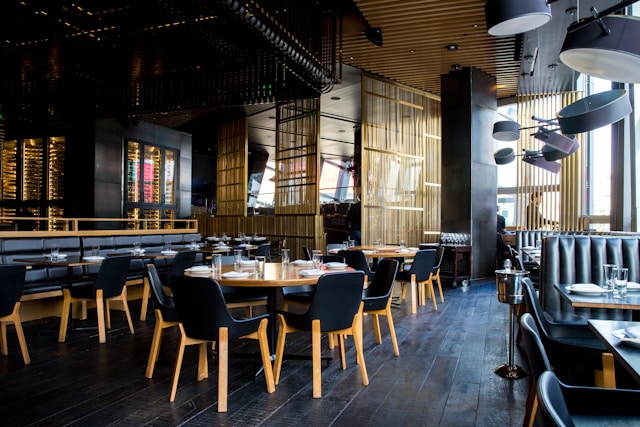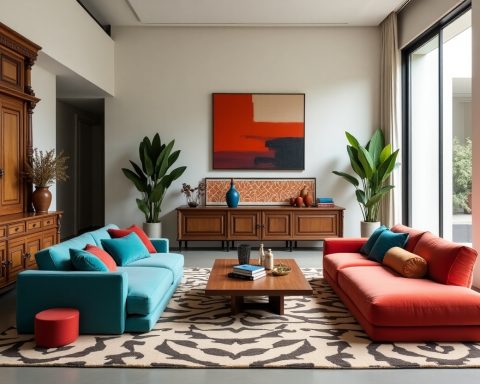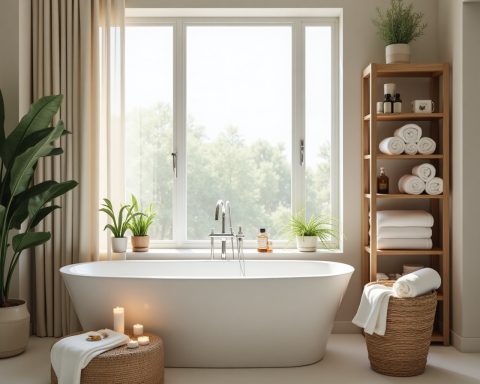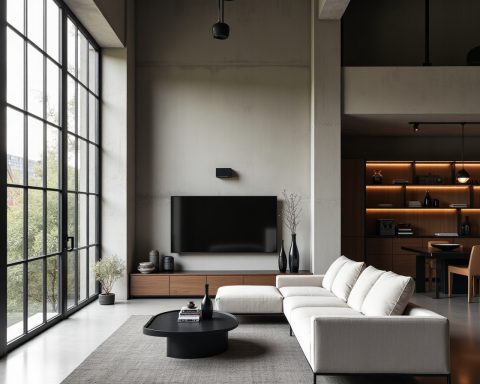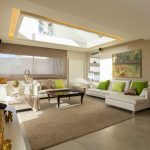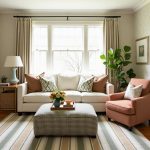Interior layouts are the unsung heroes of daily efficiency. While aesthetics are the first thing we notice about a space, functionality is what we live with every day. From the way sunlight hits the breakfast table to how quickly we can grab clothes from the closet, a layout shapes the ease, rhythm, and satisfaction of our daily routines. Well-thought-out layouts transform any living or working space into an environment that supports lifestyle, improves productivity, and enhances comfort.
Optimizing Space: Making Every Square Foot Count
Every interior layout starts with a key question: How can we use space more intelligently?
In today’s world, many people live in compact apartments or shared environments, where efficiency is paramount. Even in large homes, poor space planning can lead to underused corners or congested zones. An effective layout focuses on:
- Flow paths: Designing logical walkways between high-use areas such as the kitchen, bathroom, and bedroom ensures fluid movement.
- Vertical utilization: Adding floor-to-ceiling shelves or wall-mounted racks leverages height, freeing up floor space.
- Corner optimization: Installing corner shelves, rotating cabinets, or corner desks can turn awkward spots into valuable functional areas.
- Minimal wasted space: Entryways, transition zones, and hallways should have integrated storage, seating, or display functions to avoid becoming dead space.
Every decision should be driven by a balance of accessibility, usability, and aesthetic clarity.
Layout and the Psychology of Living Well
A layout isn’t just about physical placement—it’s about how we feel in the space.
- Open floor plans create a sense of freedom, social connection, and openness.
- Closed or segmented layouts promote privacy, focus, and mental retreat.
- Symmetry in furniture and spatial arrangement brings psychological balance and calm.
- Biophilic layouts that connect people to nature, like placing seating by windows or using organic lines and greenery, reduce stress and increase well-being.
Our brains crave order. A thoughtful layout helps reduce visual clutter, which in turn reduces cognitive load, anxiety, and decision fatigue.
Furniture Placement and Its Impact on Lifestyle Efficiency
The position and orientation of furniture directly impact the efficiency of daily movements. An interior layout must account for:
- Activity zones – Each room should have defined areas for different functions (e.g., work, rest, entertainment).
- Focal points – Arranging seating around fireplaces, TVs, or windows enhances the user experience.
- Clear walkways – Keeping 90–120 cm of clearance between major pieces prevents bottlenecks.
- Multifunctional furniture – Sofa beds, nesting tables, expandable dining sets allow transformation based on need.
Even small adjustments like angling a desk toward natural light or turning a chair to face the door can increase comfort and productivity.
Daily Workflow Optimization Through Spatial Arrangement
A good interior layout mirrors and supports your daily workflow and routine:
- In the kitchen, an efficient layout places frequently used items within easy reach, uses countertop space wisely, and ensures that movement between the fridge, stove, and sink is seamless (i.e., the kitchen work triangle).
- In the bedroom, placing wardrobes close to the bed, side tables for convenience, and ensuring lighting control from the bedside supports smoother mornings and nights.
- In the home office, layout decisions like natural light access, proximity to power outlets, and acoustic isolation can make or break your focus.
- In bathrooms, separating wet and dry zones, smart storage of daily-use items, and ensuring ventilation supports hygiene and ease.
Every detail, from where you store your keys to how quickly you can access your coffee machine, stems from intentional layout planning.
Lighting Design: Integrating Light with Layout for Maximum Efficiency
One of the most overlooked aspects of layout design is lighting integration. The effectiveness of lighting depends not only on the fixture but also on where and how it’s placed.
- Natural light optimization – Large windows, skylights, and glass doors placed strategically can illuminate the most used areas during the day.
- Zoned artificial lighting – Task lighting in kitchens and workspaces, ambient lighting in living rooms, and accent lighting for aesthetics create layered depth and usefulness.
- Smart lighting systems – Motion-activated lights in bathrooms, closets, and hallways improve accessibility and energy efficiency.
- Furniture positioning based on light sources – For instance, desks should face or sit adjacent to windows to avoid glare, and mirrors should be used to reflect light deeper into the room.
A layout that prioritizes light accessibility ensures that all tasks—reading, working, relaxing—are visually comfortable.
Noise Control and Acoustic Flow in Interior Layouts
Sound behavior is often forgotten when designing interiors, yet it plays a key role in comfort and productivity.
- Soft furnishings like rugs, upholstered furniture, and curtains can reduce echo in open spaces.
- Smart placement of noise-producing elements (e.g., dishwashers, washing machines) away from sleeping or work areas prevents disruption.
- Zoning high-traffic areas like kitchens or living rooms away from quiet zones like bedrooms boosts acoustic quality.
- Partition walls or sliding doors offer temporary soundproofing when required.
Layouts that account for acoustic dynamics help users feel more relaxed and reduce sensory overload in busy environments.
Layouts That Support Cleanliness and Maintenance
Ease of cleaning is a practical concern often forgotten during layout design. However, a well-designed space should be easy to maintain, encouraging habitual cleanliness and hygiene.
- Floating furniture allows for easy floor cleaning underneath.
- Smooth traffic patterns prevent dirt buildup in hard-to-reach corners.
- Built-in cabinetry and wall-mounted sinks reduce the number of surfaces that collect dust and grime.
- Resilient materials in high-use zones—tile in kitchens, waterproof panels in bathrooms, or stain-resistant fabrics in living rooms—help maintain cleanliness.
An easy-to-clean layout means more time enjoying the space and less time managing it.
Safety and Accessibility: Layouts That Work for Everyone
Layouts should be designed not just for beauty or function but also for universal access and safety:
- Barrier-free access for the elderly or disabled—wide hallways, ramps instead of stairs, and easy-to-reach shelves.
- Non-slip materials in kitchens and bathrooms prevent falls.
- Rounded corners on furniture protect small children.
- Night lighting paths prevent accidents during nighttime movement.
- Fire-safe design, including the placement of fire extinguishers and unblocked exits, is crucial in every layout.
An accessible and secure layout promotes peace of mind and inclusivity, making the space usable for all ages and abilities.
Long-Term Adaptability: Designing for Future Needs
Life evolves. A layout that accommodates change ensures long-term satisfaction and cost-effectiveness.
- Children’s rooms can evolve from play areas to study zones.
- Guest rooms can double as offices or hobby spaces.
- Expandable furniture and modular walls allow easy transformation of the layout.
- Neutral, timeless core layouts reduce the need for expensive remodeling later on.
When layouts are built with scalability and adaptability in mind, they serve not just your current lifestyle but your future one too.
Conclusion: Functional Layouts Are the Foundation of Better Living
A great layout doesn’t shout—it whispers practicality, comfort, and intention into your daily life. It saves you time, supports your habits, and silently contributes to your mental well-being. Whether you’re designing a studio apartment or a sprawling office space, never underestimate the impact of an intentional, functional layout.
Investing in layout design means investing in your everyday quality of life, productivity, safety, and future adaptability. It is not an accessory to design—it is its very skeleton.


